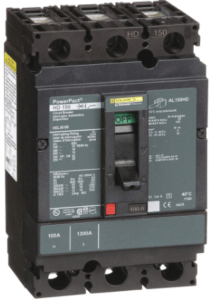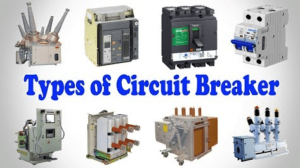Types of circuit Breaker
What is Circuit Breaker?
A circuit breaker is a device that is capable of interrupting or opening an electrical circuit when the intensity of an electric current that flows through it exceeds a certain value or, when a short circuit has occurred, in order not to cause damage to the electrical equipment. Unlike fuses, which must be replaced after a single use, the circuit breaker can be reset.
How does a circuit breaker work?
Circuit breakers are devices that can be found in different sizes and various shapes. Circuit breakers are thermal magneto switches, with the functionality of opening short circuits or sudden rises in the intensity of the electric current.
In this way, both people who may be handling an electrical appliance and the appliances themselves are protected. Unlike fuses, circuit breakers are reset after the damage has been fixed.
As we said, these devices have a protective function. When they detect a variation in voltage, the circuit breakers cut the current, thus avoiding possible grounding and indirect contacts.
This type of contact, the indirect one, occurs when the current reaches some part of the electrical apparatus that is not designed for its passage, but that, nevertheless, maintains a tension due to some malfunction.
Circuit Breaker Features
There are various causes that can lead an appliance to maintain a voltage to the mass, that is, indirect contact. These can be due to deterioration of the cables, a short circuit or poor insulation. The most important characteristic of the circuit breaker refers to a calibration that leads it to interrupt up to a maximum current, as well as a maximum working voltage.
See Also: Fuse Types
Types of circuit breaker
There are different types of circuit breakers. The most common are alternating current circuit breakers, although there are also for direct current. Among the most common circuit breakers are:
- Low voltage
- Solid State
- Magnetic
- Thermal Magnetic
- Magnetic Hydraulic
- Common Trip Breakers
- Shunt Trip Breakers
- Medium Voltage
- High Voltage
See also video of Circuit Breakers Types:
Now we Discuss in detail about some of the given circuit breaker Types:
1: Low Voltage circuit breakers
This Type of circuit breaker is used for domestic, commercial and industrial purposes.
Miniature circuit breaker ( MCB) rated up to 125 A, and Molded Case Circuit breaker ( MCCB) rated up to 1600 A are some examples of Low voltage ckt breakers.
Features
- These kinds of circuit breakers are often installed in draw-out enclosures that allow the removal and interchange without dismantling the switch gear.
- The Large low-voltage molded case and power Ckt breakers may have electric motor operators so they can be opened and closed under the remote control.
- The Low-voltage ckt breakers are also made for direct-current applications, such as DC for the subway lines.
2: Solid-state ckt Breakers
Solid-state ckt breakers, also known as digital ckt breakers are the technological innovation that determines advanced circuit breaker technology out of the mechanical level, into electrical.
This assurance has several advantages, such as cutting the circuit in fractions of μ seconds, better monitoring of circuit loads, and longer lifetimes.
3: Thermal Magnetic Breakers
Thermal magnetic circuit breakers are the type found in most of the distribution boards in Europe and countries with similar wiring arrangements, incorporate both techniques with the electromagnet responding instantaneously to large surges in current and the bimetallic strip responding to less extreme but longer term over current conditions.
4: Magnetic-hydraulic
A magnetic-hydraulic ckt breaker uses the solenoid coil to provide the operating force to open the contacts. Magnetic hydraulic breakers are incorporate a hydraulic time delay feature by using viscous fluid.
5: Common trip Breakers
These types of breakers are used To provide simultaneous breaking on multiple circuits from a fault on anyone, circuit breakers may be made as a ganged assembly. This is a very common requirement for 3-phase systems, where breaking may be either 3 or 4 poles (solid or switched neutral). Some makers make ganging kits to allow groups of single-phase breakers to be interlinked as required.
6:Shunt-trip units
A shunt-trip unit is similar to the normal breaker and the moving actuators are ganged to the normal breaker mechanism to operate together in the same way, but the shunt-trip is a solenoid intended to be operated by an external constant voltage signal, rather than a current, commonly the local mains voltage or DC.
These types of breakers are often used to cut down the power when a high-risk event occurs. Shunt trips may be a user-fitted accessory to a standard breaker.
7: Medium Voltage breakers
MV circuit breakers rated between (1 -72 kV ) may be assembled into metal-enclosed switch gear line up for indoor use or maybe individual components installed outdoors also.
Related Topics
- Types of Fuse
- Difference between fuse and circuit breaker
- Difference between series and parallel circuits
